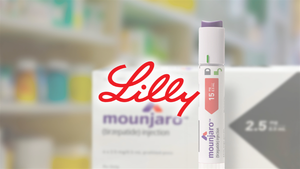The "The Global Market for Polymeric Materials for Advanced Electronic Packaging 2026-2036" report has been added to ResearchAndMarkets.com's offering.
The report delivers comprehensive market forecasts segmented by material category (dielectric, mold compound, underfill, TBDB), packaging platform (SiP, FOWLP, 2.5D, 3D, embedded die), end-market application (mobile & consumer electronics, HPC & AI, automotive & ADAS, telecom & infrastructure, IoT & edge computing, AR/VR), and geographic region spanning the decade from 2026 through 2036.
The polymeric materials market for advanced electronic packaging has emerged as a critical enabler of next-generation semiconductor technologies, reaching >$1.5 billion in revenue in 2024 projected to grow at a compound annual growth rate (CAGR) of >13% to 2036. Detailed revenue and volume projections enable stakeholders to identify the fastest-growing market segments, with particular emphasis on the explosive growth anticipated in 2.5D/3D packaging driven by artificial intelligence, high-performance computing, and generative AI applications.
This rapid expansion reflects the semiconductor industry's fundamental shift toward advanced packaging architectures driven by the physical limitations of traditional transistor scaling and the insatiable demand for higher performance, greater functionality, and improved energy efficiency. The market's growth is propelled by several transformative semiconductor megatrends, including high-performance computing (HPC), generative AI, automotive ADAS systems, 5G/6G communications, AR/VR applications, and edge AI deployment.
Mobile and consumer electronics currently dominate market volumes and revenues, but telecom and infrastructure segments are experiencing the fastest growth, driven by hyperscale data center buildouts supporting AI workloads. Among packaging platforms, System-in-Package (SiP) remains the largest consumer of polymeric materials, while 2.5D and 3D packaging represent the fastest-growing segments with CAGRs exceeding 28-35%, reflecting the industry's embrace of chiplet architectures and heterogeneous integration for advanced processors. The polymeric materials supply chain exhibits significant concentration. Geographic concentration is even more pronounced.
The industry faces critical technical challenges, particularly coefficient of thermal expansion (CTE) mismatch between polymers and silicon, which drives warpage and reliability concerns in large, thin packages. Since polymers expand significantly more than silicon under thermal cycling, material developers are pursuing application-specific formulations that balance competing requirements: low CTE, high thermal conductivity, low dielectric constant, superior adhesion, fine-pitch patterning capability, and increasingly, PFAS-free compositions to meet evolving environmental regulations. The convergence of AI-driven computing demands, regulatory pressures for sustainable materials, and the technical complexity of 3D heterogeneous integration positions polymeric materials as indispensable enablers of semiconductor innovation through 2036 and beyond.
Technology analysis examines the evolution of material chemistries including polyimides (PI), polybenzoxazole (PBO), benzocyclobutene (BCB), epoxy-based systems, and acrylic resin composites, evaluating critical performance parameters such as coefficient of thermal expansion (CTE), dielectric constant (Dk), dissipation factor (Df), glass transition temperature (Tg), thermal conductivity, and moisture absorption. The report explores emerging innovations in panel-level packaging, co-packaged optics (CPO), sustainable bio-based polymers, and AI-driven material design optimization.
Supply chain intelligence reveals the competitive landscape dominated by Japanese suppliers commanding approximately 80% market share, with detailed profiles of over 90 companies including material suppliers, packaging service providers, semiconductor manufacturers, and equipment vendors. Market share analysis identifies the top players across each material category, highlighting strategic positioning, technological capabilities, geographic presence, and competitive advantages. The report examines critical industry trends including PFAS-free material development, carbon emission reduction initiatives, recycled material integration, and regulatory compliance requirements.
Report Contents include:
Market Analysis & Forecasts
- Executive summary with context, market overview, and key drivers (2026-2036)
- Global market size and growth projections with 13% CAGR analysis
- Market forecasts by material category: dielectrics, mold compounds, underfills, TBDB materials
- Market segmentation by end-market: Mobile/Consumer, HPC/AI, Automotive/ADAS, Telecom, IoT, AR/VR
- Market analysis by packaging platform: SiP, FOWLP, 2.5D, 3D, Embedded Die
- 2.5D/3D packaging growth trajectory showing 28-35% CAGR
- Regional market distribution across Asia, Americas, and Europe
- Price trend analysis and volume forecasts through 2036
Material Technology Deep Dives
- Dielectric materials: PI, PBO, BCB, epoxy-based, acrylic composites with suppliers and specifications
- Molding compounds: EMC, MUF, liquid molding with thermal conductivity roadmaps
- Underfill materials: CUF, MUF, NCF, NCP with fine-pitch and hybrid bonding capabilities
- Temporary bonding/debonding: thermal slide, laser, chemical, mechanical, UV-release technologies
- Material property comparisons: CTE, Dk, Df, Tg, thermal conductivity, moisture absorption
- Deposition processes: spin-on, spray coating, lamination, compression molding, transfer molding
- Advanced lithography capabilities and fine-pitch patterning (sub-2m resolution)
Supply Chain & Competitive Intelligence
- Polymeric materials ecosystem map with 50 suppliers by category
- Top 20 supplier rankings with market share analysis (2024-2036)
- Geographic concentration analysis
- Vertical integration analysis and manufacturing capacity assessments
Emerging Technologies & Applications
- Panel-level packaging material requirements and cost benefits (510mm-600mm panels)
- Co-packaged optics (CPO) with low-loss polymers for optical waveguides
- Chiplet integration and heterogeneous integration material challenges
- Advanced thermal management materials for AI/HPC applications
- Sustainable and bio-based polymeric materials development
- AI-driven material design and optimization methodologies
- Next-generation material innovations and technology readiness levels
Regulatory & Technical Challenges
- PFAS-free material requirements and compliance timeline
- CO2 emission standards and sustainability initiatives
- Recycled material integration strategies
- Safety Data Sheet (SDS) compliance requirements
- CTE mismatch and warpage control solutions for large packages
- Moisture sensitivity and reliability standards (MSL ratings)
- High-temperature performance requirements (>260C) for automotive
- Fine-pitch interconnect technology roadmap (bump pitch evolution)
- Material characterization and industry standardization initiatives
- Process integration challenges and cost optimization strategies
This comprehensive report includes detailed profiles of 91 leading companies active in the polymeric materials ecosystem for advanced electronic packaging, encompassing the complete value chain from raw material suppliers and specialty chemical manufacturers to advanced packaging service providers, leading semiconductor fabs, and equipment manufacturers driving innovation in polymeric materials for next-generation electronic packaging applications.
Company Profiles (91 Companies)
- Detailed profiles of material suppliers, OSAT providers, semiconductor manufacturers
- Product portfolios, technological capabilities, and market positioning
- Geographic presence and manufacturing facilities
- Strategic initiatives, R&D investments, and recent developments
- Contact information and corporate structure
- 3M
- AEMC
- AI Technology
- Ajinomoto
- AMD
- Amkor Technology
- AOI Electronics
- Applied Materials
- Asahi Kasei
- ASE
- Brewer Science
- Caplinq
- Chang Chun Group
- Chang Wah Electromaterials
- CXMT
- Darbond
- Deca Technologies
- DELO
- Dupont
- Empower Materials
- Epoxy Technology
- Eternal Materials
- Everlight Chemical
- Fujifilm
- GlobalFoundries
- HD Microsystems
- Henkel
- Huahai Chengke
- Hysol
- IBM
- Imec
- Innolux
- Intel
- JCET
- JSR
- Kayaku Advanced Materials
- KCC
- Kyocera
- MacDermid Alpha
- Manz
- MASTERBOND
- Merck
- Micro Materials
- Micron
- Mingkun Technologies
- Minseoa
- Mitsubishi Gas Chemical
- Mitsui Chemicals
- Murata
- Nagase ChemteX
- Namics
For more information about this report visit https://www.researchandmarkets.com/r/vm7xsj
About ResearchAndMarkets.com
ResearchAndMarkets.com is the world's leading source for international market research reports and market data. We provide you with the latest data on international and regional markets, key industries, the top companies, new products and the latest trends.
View source version on businesswire.com: https://www.businesswire.com/news/home/20251114892471/en/
Contacts
ResearchAndMarkets.com
Laura Wood, Senior Press Manager
press@researchandmarkets.com
For E.S.T Office Hours Call 1-917-300-0470
For U.S./ CAN Toll Free Call 1-800-526-8630
For GMT Office Hours Call +353-1-416-8900





